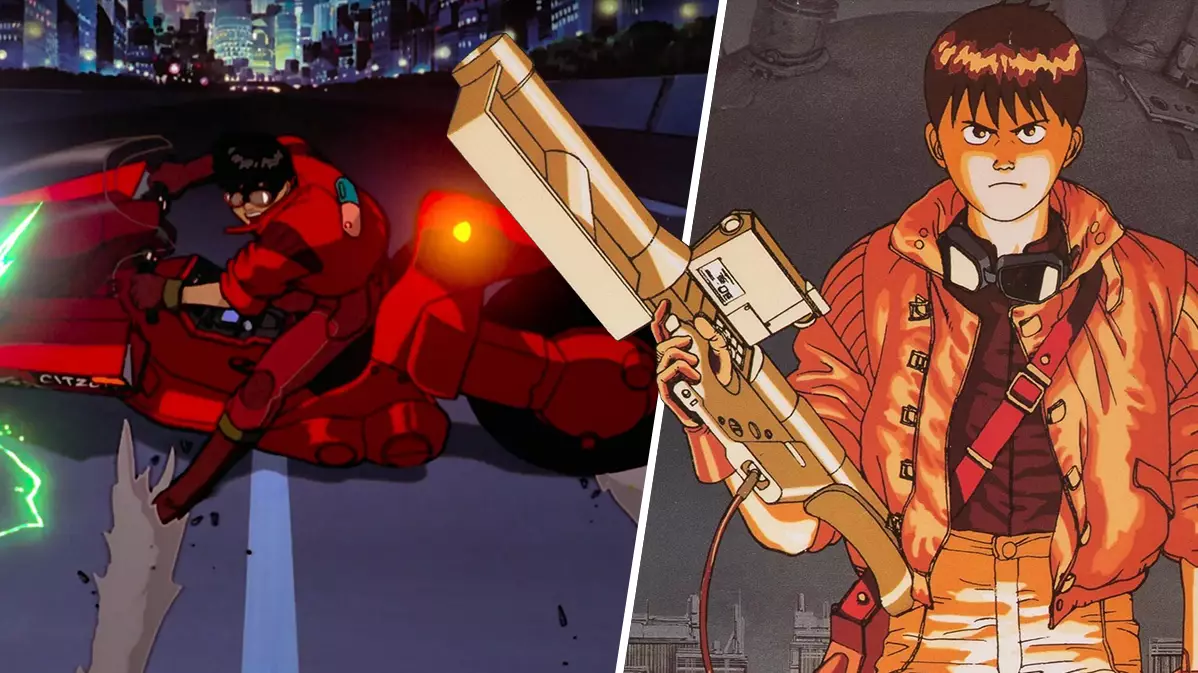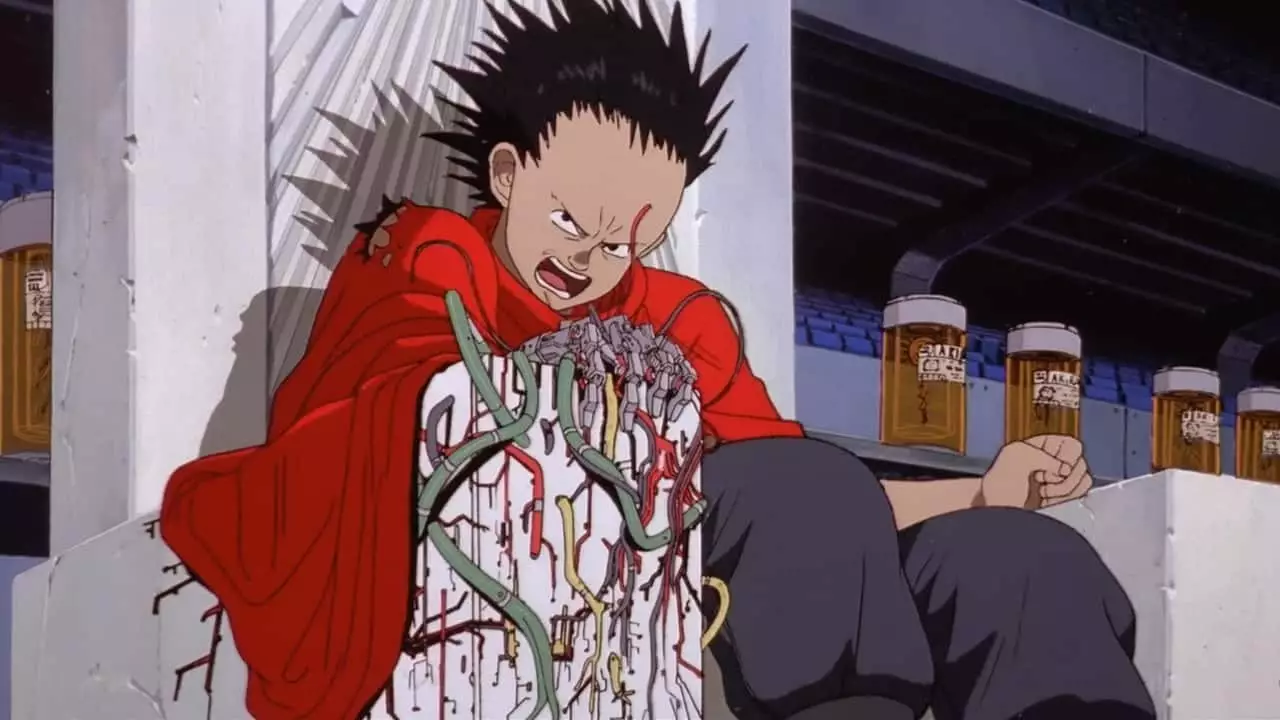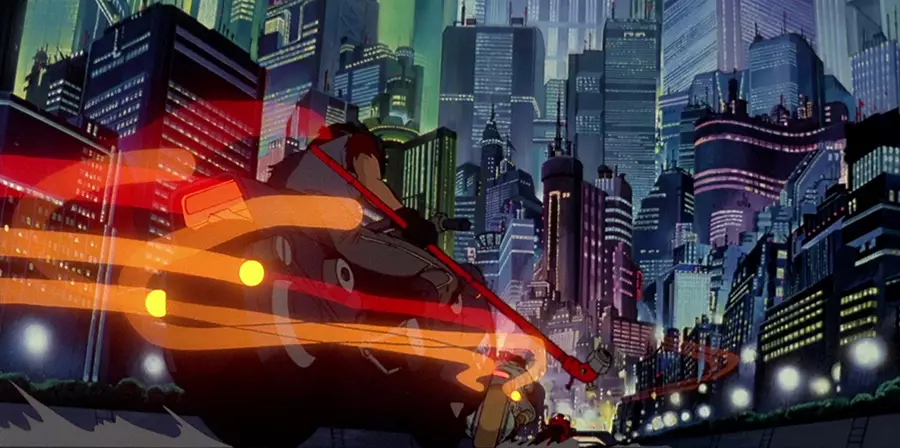
While I first saw it some years earlier, as a teenager, while mostly being distracted by anything else at a mate's place, I didn't properly watch Akira until my early 20s. And when I did, it was on a DVD copy, which I still own, proclaiming across its cover: "No Akira, no Matrix, it's that important."
It's a quote from Empire's review of the 1988 anime movie, written by Kim Newman, and there's no real context for the comparison given in the critic's words. It's simply the final sentence of a very short assessment, almost there more for marketing purposes than as a part of any critique. Digging a little deeper into whether or not The Matrix's directors, Lana and Lilly Wachowski, drew any reported influence from Akira, and it transpires they did use a famous anime movie as a kind of shorthand for their film's style, especially in regard to its action sequences - but that movie was 1995's Ghost in the Shell, not Akira. The siblings wanted to make what they'd seen in Mamoru Oshii's animated feature, but "for real".
Akira received a limited 4k cinema release in 2020 - check out the trailer for that, below
So when it comes to Newman's comment that Akira was a precedent for The Matrix, a movie that made it possible, it's not really a case of there being any kind of direct lineage between the high-budget adaptation ($5.5 million made it the most expensive anime production ever, at the time) of Katsuhiro Otomo's manga and Keanu Reeves dodging bullets in super-slow motion. It's a lot more to do with the look, the feel, and the flatout coolness of the two films. Akira begets Ghost in the Shell, begets The Matrix, begets... the live-action Ghost in the Shell?
Advert
In 1999, The Matrix felt truly cutting edge, like nothing cinema had seen before, and it overwhelmed the popular culture of the end of the millennium and bent it to its will. The Matrix was everywhere you looked. Conversely, Akira wasn't at the time of its 1988 release, in the West at least (it didn't even reach UK cinemas until 1991). But as its word-of-mouth acclaim grew, and home-video releases made their way into the mainstream, so the likes of my friends and I were drawn to it, bunking off college classes to sit around and watch whatever Manga Entertainment videos had dropped into HMV recently.

Somewhere between Appleseed, Battle Angel and episodes of Cyber City Oedo 808, there was Akira, a sprawling, tangled, complicated thing that short-attention-span teens just weren't programmed to appreciate fully. But time's both a healer and a teacher, and returning to Akira some years later, I was struck, wholly, by its spectacle, its ambition, and its themes. Amid the destruction, the violence and the vertigo-piquing scale of the thing, the movie touches on the power of friendship in the face of incredible pressure; the propensity for those with control to become corrupt; and how much of ourselves, our human being, we lose as the march of technology continues inexorably.
And, yes, Akira is absolutely, inarguably, expectations-exceedingly cool, too. It put its budget to amazing use, the animators at Tokyo's Shinsha studio using a full 24 frames per second to achieve a fluidity that anime and other animated productions of the era - and since - simply never strove for. Most anime of the time was made using 12 frames per second, but with Akira the movie being directed by the creator of Akira the manga, who was assured of full creative control, this was always going to be a project that aimed higher than most. It's a blockbuster labour of love, and that attention is present in every frame.

Every single second of what's on screen looks incredible, each seemingly irrelevant detail given time and attention enough to create a world that's so immersive, so real of its grease and dirt, shattered bone and streaking tail lights, that you quickly forget this is a cartoon. Yes, there's a live-action adaptation of Akira coming, with Thor: Ragnarok's Taika Waititi directing, but it's unlikely to be any more enveloping, any more enthralling, than the sights and sounds offered by a picture that's now 33 years old. I doubt it'll make a CD jukebox look as attractive, or motorcycles any more dangerous.
Advert
I'm going to stop short of diving into plot points, character arcs and resolutions, because I only started writing this to encourage you to watch Akira. Because it's on British Netflix as of right now. It's a movie with such a long-held reputation as the anime movie above all others, the anime movie to turn newcomers onto the medium, the anime movie to rule them all, that I can understand hesitance from those who're yet to check it out. Sometimes the so-called classics become so ingrained within a culture that you come to appreciate them more by their bleeding into other areas of media consumption - wink-nudge parodies, well-intentioned love-letters, cheap appropriation, viral memes, The Matrix - and never see them for yourself.
But with the cost of entry now reduced to a subscription fee, there's never been a better time to test your own expectations against a film that, yes, is persistently placed on a pedestal. Heck, I've just done so, myself. But y'know, some pieces of art deserve to be so feted, so resistant are they to the ravages of time, and Akira is one of them.
Featured Image Credit: Toho Co, Ltd